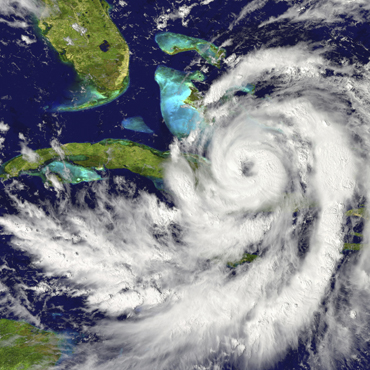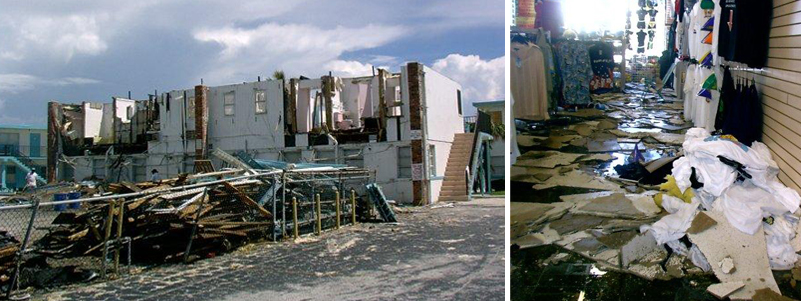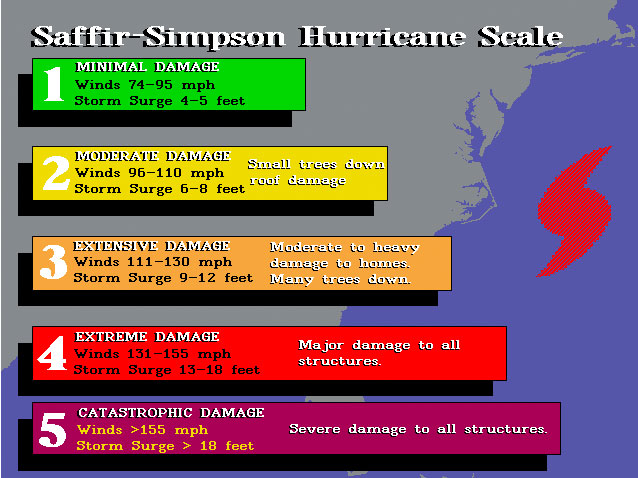Hurricane Damage
Wind Damage Public Adjuster
HURRICANES REPRESENT A SIGNIFIGANT PERIL FACING U.S. COASTAL STATES AND COASTAL TERRITORIES.
A Windstorm Loss, caused by a Hurricane can be extremely devastating based on the extent of the Wind Speeds, generally referenced as a CAT 1 – CAT 5, based on intensity (See Saffir-Simpson Scale Below), which in direct correlation results in both level of impact and devastation.
Hurricanes represent a significant Peril facing U.S. “Coastal States” and “Coastal Territories”, those States and Counties located in Tier 1, generally representing States/Counties with Direct Coast Line Exposure, whereas Tier 2, generally representing States/Counties, within a 60 Mile distance from the Coast Line Exposure.
Huge hurricane approaching Florida in America. Elements of this image furnished by NASA
A Hurricane loss could significantly impact your financial condition as a CAT 1, and the difference between CAT 2 or 3 could devastate your financial condition. As a result the majority of “Hurricane Damages” are covered under the Peril of Windstorm. Generally within Tier 1 and Tier 2 Wind Zones, most insurers will position a Percentage Windstorm or Named Storm Deductible (Note: Check Your Percent, 1% to 2% are Average, but some 5% and upwards to 10%).


We should also note that most insurance coverage forms exclude “Wind Driven Rain”, even if caused by a Hurricane or other Wind Loss. They only cover Water which enters through a Structural Opening caused initially by Windstorm to the Roof or Exterior of the Building, i.e. any Wind Drive Rain and/or resulting Damage, i.e. Water blown through Doors, Windows, Soffits, Vents, etc. is specifically excluded from Coverage.
Hurricane losses on an Average in the U.S. result in 6.2B Annually (1989-1995).

CATEGORY 1 TYPICAL DAMAGE: Storm surge generally 4-5 ft above normal. No real damage to building structures. Damage primarily to unanchored mobile homes, shrubbery, and trees. Some damage to poorly constructed signs. Also, some coastal road flooding and minor pier damage. Hurricanes Allison of 1995 and Danny of 1997 were Category One hurricanes at peak intensity.
CATEGORY 2 TYPICAL DAMAGE: Storm surge generally 6-8 feet above normal. Some roofing material, door, and window damage of buildings. Considerable damage to shrubbery and trees with some trees blown down. Considerable damage to mobile homes, poorly constructed signs, and piers. Coastal and low-lying escape routes flood 2-4 hours before arrival of the hurricane center. Small craft in unprotected anchorages break moorings. Hurricane Bonnie of 1998 was a Category Two hurricane when it hit the North Carolina coast, while Hurricane Georges of 1998 was a Category Two Hurricane when it hit the Florida Keys and the Mississippi Gulf Coast.
CATEGORY 3 TYPICAL DAMAGE: Storm surge generally 9-12 ft above normal. Some structural damage to small residences and utility buildings with a minor amount of curtainwall failures. Damage to shrubbery and trees with foliage blown off trees and large trees blown down. Mobile homes and poorly constructed signs are destroyed. Low-lying escape routes are cut by rising water 3-5 hours before arrival of the center of the hurricane. Flooding near the coast destroys smaller structures with larger structures damaged by battering from floating debris. Terrain continuously lower than 5 ft above mean sea level may be flooded inland 8 miles (13 km) or more. Evacuation of low-lying residences with several blocks of the shoreline may be required. Hurricanes Roxanne of 1995 and Fran of 1996 were Category Three hurricanes at landfall on the Yucatan Peninsula of Mexico and in North Carolina, respectively.
CATEGORY 4 TYPICAL DAMAGE: Storm surge generally 13-18 ft above normal. More extensive curtainwall failures with some complete roof structure failures on small residences. Shrubs, trees, and all signs are blown down. Complete destruction of mobile homes. Extensive damage to doors and windows. Low-lying escape routes may be cut by rising water 3-5 hours before arrival of the center of the hurricane. Major damage to lower floors of structures near the shore. Terrain lower than 10 ft above sea level may be flooded requiring massive evacuation of residential areas as far inland as 6 miles (10 km). Hurricane Luis of 1995 was a Category Four hurricane while moving over the Leeward Islands. Hurricanes Felix and Opal of 1995 also reached Category Four status at peak intensity.
CATEGORY 5 TYPICAL DAMAGE: Storm surge generally greater than 18 ft above normal. Complete roof failure on many residences and industrial buildings. Some complete building failures with small utility buildings blown over or away. All shrubs, trees, and signs blown down. Complete destruction of mobile homes. Severe and extensive window and door damage. Low-lying escape routes are cut by rising water 3-5 hours before arrival of the center of the hurricane. Major damage to lower floors of all structures located less than 15 ft above sea level and within 500 yards of the shoreline. Massive evacuation of residential areas on low ground within 5-10 miles (8-16 km) of the shoreline may be required. Hurricane Mitch of 1998 was a Category Five hurricane at peak intensity over the western Caribbean. Hurricane Gilbert of 1988 was a Category Five hurricane at peak intensity and is one of the strongest Atlantic tropical cyclones of record.
PLC and our Global Team of Loss Experts stand ready to assist You, Our Client, ensuring Your Maximum and Expedited Claim Recovery!!!
